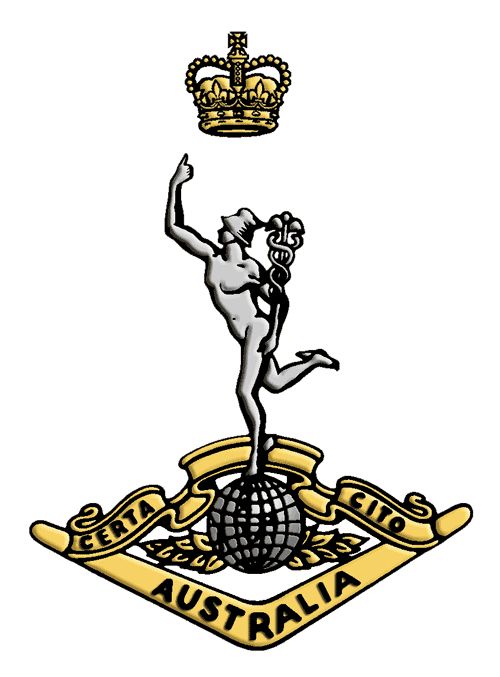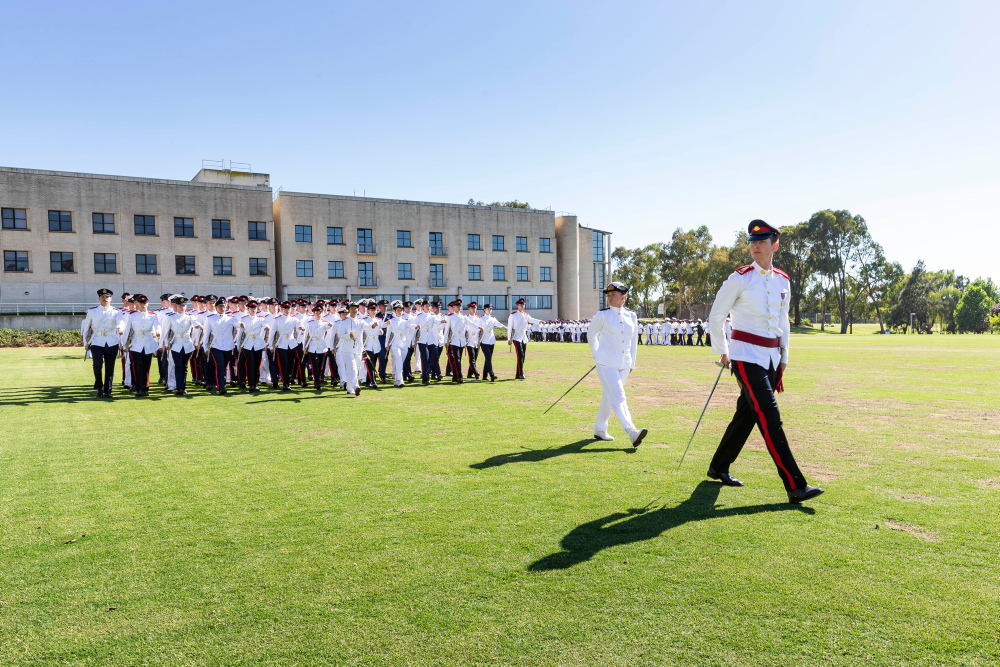The Soviet Union’s Kirov-class guided-missile cruisers, launched in the late 1970s, were among the largest non-aircraft carrier warships built since World War II.
Often described as battlecruisers, these nuclear-powered ships were designed for anti-submarine and anti-ship roles, primarily armed with the P-700 Granit missiles.
Of the original four Kirov-class vessels, only Admiral Nakhimov is undergoing modernization, while the others have been retired.
The Admiral Nakhimov is expected to be equipped with advanced weapons like the Zicron hypersonic missile, though scepticism surrounds Russia’s claims of these systems’ capabilities.
Good morning Ray,
I’ve attached a short item for your consideration – titled: “Vietnam War: Tensions, Divisiveness, Discord, ‘Disunion’ and Friction among the VC – and with the NVA in the South”.
It’s an “extract” from a longer 28-page paper for “Canberra +” that I also included as an Annex in my 2022 book on “The Viet Cong 275th VC Regiment (To the Battle of Long Tan and After …)” – 220,500-words.
At the conclusion of the short attached item, I’ve offered interested readers complimentary copies of the 28-page paper on “Tensions” that includes some photographs and illustrations.
Best wishes, Ernie Chamberlain
Vietnam War: Tensions, Divisiveness, Discord, “Disunion” and Friction
among the VC – and with the NVA in the South
At the weekly intelligence conference in Saigon on 20 September 1969, General C.W.
Abrams (COMUSMACV) remarked: ‘Christ, you can’t get them ((the NVA and VC))
together at a free beer party, really.’
A US/South Vietnamese propaganda leaflet – depicting communist fratricide and Chinese
Control of NVA/VC
“The Northerners – who have had considerable infusion of Chinese blood, are noted for their
aggressiveness, energy and sense of superiority toward the Southerners whom they regard as
indolent and inefficient. In the South, the climate is more tropical, there is more rich soil and
less population congestion.”
“The VC enjoy eating some vegetables raw while the NVA troops wanted them boiled.”
“… dietary differences eg; Southerners did not eat dog meat – a Northern taste”.
“In Phuoc Tuy especially – regroupees ((ie: southerners who had trained in the North)) and
northerners had assumed most of the principal command positions ((in communist forces)).”
“… female SVN cadres and the Vietnamese residents in Cambodia usually like to make
friends with NVN-born cadres and soldiers. Due to this reason, SVN-born cadres and soldiers
search for means to calumniate ((ie to make false or defamatory statements)) against their
opponents.”
An Overview
During the Vietnam War, the US and the Republic of Vietnam (i.e. South Vietnam) actively highlighted the presence of North Vietnamese Army (NVA) troops fighting in the South. However, despite being aware of tensions and divisions between the Viet Cong and the NVA in late 1965 – evidenced in intelligence reporting including captured communist reports and directives, the US and Saigon were “initially more cautious and circumspect in exploiting any divisiveness among the communists in South Vietnam.” However, six months later, US “guidance” was more aggressive – in its assessments of “Contradictions and Cleavages – Northerner Versus Southerner.” However, throughout most of the War, the US and Saigon were wary and reticent to actively exploit divisions between the VC and NVA in the South – noting: “A national campaign seeking to play on sectional prejudices are not in our long-range interests and would run counter to the present National Reconciliation Program of the Government of Vietnam.” However – from 1969, the US and Saigon Government did, at times, seek to exploit differences and tensions between Northern and Southern communists.
A complimentary 28-page illustrated Research Note on this topic, is available from Ernie Chamberlain – chamber@pipeline.com.au . Issues addressed include: Southern-born ‘Regroupees’ in the North returning to the South – and Tensions; The ‘Chinese Card’; Tensions Between Northerners and Southerners; Exploiting Tensions and Differences; NVA/VC Cooperation in Ph??c Tuy – June 1969: Attacks on Bình Ba and Hòa Long; Post-War Tensions; and Measures to Prevent Disunion.
Ernie Chamberlain – September 2024
1 The complete 28-page/12,800-word Research Note 7/7A was passed in mid-2021 to the Australian War
Memorial – Canberra, Australian Army History Unit – Canberra, NZ Defence – Wellington, AAMIM –
Canungra, NVVM – Phillip Island, ADFA/UNSW Military Operations Analysis Team – Canberra, and US
MACCORDS Team 89 (Vietnam veterans). The Note is also incorporated as Annex N in the book -Chamberlain
E.P., The Viet Cong 275th Regiment (To the Battle of Long Tan, and After …), 2022.
Author Unknown
When the history of the decline and fall of the great nation that was Australia is written, how will scholars trace its downward spiral?
Will they tag that point at which a vast percentage of the workforce became so lazy and ill-disciplined that it could no longer entertain the thought of travelling to the workplace and demanded to work from home?
Get up, shower, get dressed and walk to the bus stop? You must be joking.
Employers, led by governments, buckled to their demands and what was a Covid-convenience became regarded as an absolute right.
Lifestyle, the historians will note, became the worker’s mantra which superseded diligence and dedication with heavy penalties imposed on those bosses who dared contact an employee one minute after their official clock-off time.
“More money, less work” they chanted as they logged off and stretched back on the couch.
“More money, less work” said the unions and the government said “No worries, comrades” as productivity slipped lower and then lower again.
Maybe they will chart it as beginning at that time when people became so lazy that they could no longer be bothered to prepare meals and instead headed for the nearest takeaway outlet and then, tiring of the effort involved in so doing, picked up their phones and had their calorie-laden meals delivered to their doors.
More food, less effort they sighed, sinking once more onto the couch, and the nation got fatter and fatter and fatter.
Perhaps the historians will chart this decline from the moment that a prime minister embraced lying as a virtue and the masses, in exchange for a handful of silver, nodded dumbly and pocketed the proffered coins.
Others might wonder if the moral rot took hold when governments failed to act against the murderous, anti-Semitic outpourings from some Muslim clerics, fearful that if it did it might cost it votes in those electorates with a high proportion of Muslims.
Most people, either ignorant or too self-obsessed to care, shrugged at these outrages and went back to moaning about the price of petrol and groceries.
Holocaust? That’s history, mate. Nothing to do with me.
It was when mobs roamed the streets, others might suggest, assaulting and robbing the innocent while the system supposed to deliver justice and protect them smiled and said: “They’re juveniles. They know not what they do. Release them” that the once great society began to crumble.
It was the concept of two Australians, other historians might argue, that divided and weakened the nation’s underpinnings for a nation divided cannot but fall.
As they trawl through the archives, they will find that the country became split between the Indigenous and the non-Indigenous, the former demanding special treatment and the latter sensing this went against the principles of democracy.
These historians will pore over the results of the Voice referendum and wonder why, when the people had made their wishes clear, the demands for two classes of Australians to exist continued and with them demands for money and land.
The governments folded and gave away more money and signed away vast tracts of the country, and the people’s discontent smouldered and their resentment grew.
Scholars might also note that the nation began its decline at the same time that the churches began to empty and the sports stadiums filled as sport became the new religion.
Grateful for this distraction from the reality of economic decline, politicians built bigger and better stadiums and states outbid each other for the right to hold games, premiers and prime ministers sitting in the grandstands like latter-day emperors as the gladiators took to the field and the crowd roared as the country grew poorer and poorer.
Scholars wondering why, as the wheels of industry began to slow, the government did nothing to avert the looming crisis may find the answer in the cries of the people who demanded more handouts and more subsidies.
So the government gave them more money and they smiled and settled once more back on the couch. “More money, less work” they sighed.
The scholars will also find images of the giant windmills that began to cover the landscape as power stations closed and the country’s leaders held hands and cried “net zero, net zero” and as they did, the lights went out for the last time and darkness enveloped the land and the great country that was once Australia was no more.
In conclusion.
We are now in a generational mix of elites (and wealthy offspring) with so much wealth, a majority of the struggling middle class being restrained and punished at every corner, and a breed of new laziness that expects and demands rights which are not possible or financially feasible, all at the same time our installed Politicians (and of course many of us comfortable “baby boomers”) just sit back and almost blindly acquiesce to most of the scenarios happening around us.
With a struggle currently underway for world control happening and the globalist elite Bankers (aka Rothschilds etc, etc) and big player corporations (Blackrock, Vanguard etc) and other industrialists favouring eugenics, chaos, pandemics and division to create a one-world control plan via the WEF and WHO. The world is in turmoil and rapid decline, to say the least!
Control the Media and you control the Propaganda. Control the Propaganda and you control the Narrative. Once you have that, you can control the Population, and they are certainly trying to do that!
Natural change is good, refreshing and inevitable, but controlled change, and with nefarious intent.
Sadly, I advise of the death on Monday 9th September 2024 of Ray Stevens in Tamworth. He served in Vietnam as a LCPL with 110 Signal Squadron 1971-72. Ray was a good friend, and we spent many holidays at Evans Head with other veteran friends. Ray had a serious medical problem and well and truly outlived the doctors’ predictions. He will be sadly from our group, but he leaves us with many fun memories – sadly we also will miss his winning tips on the horses.
Funeral details will be advised
Ray Payne
hq@frontline.asn.au
Australia First Blog
Australia faces significant vulnerabilities in three critical areas during wartime: energy and fuel, pharmaceuticals, and smart devices. These are essential for daily life and national stability, yet the country lacks the domestic production capacity to withstand major supply chain disruptions.
Fuel and Energy Security
As a member of the International Energy Agency, Australia is supposed to hold a 90-day supply of refined fuel. However, the country has struggled to meet this obligation. Domestic refining capacity has decreased, and there are insufficient storage facilities. Recent estimates suggest Australia would only have fuel for days or weeks if supply lines were cut, leading to widespread shortages, impacting supermarkets, air travel, and non-essential businesses.
Even a short-term disruption to fuel supply could have severe consequences, highlighting the country’s lack of preparedness.
Pharmaceutical Dependence
Australia imports around 90% of its pharmaceuticals, with China being a primary supplier. In the event of conflict, especially between China and the U.S., access to medicines would be jeopardized. While Australia has the expertise to produce pharmaceuticals domestically, ramping up production would take time, potentially causing panic and harming public welfare.
Reliance on Smart Devices
Australia also depends heavily on imports for digital devices and components, particularly from China. While shortages of these goods may not be life-threatening, the impact on industrial systems, such as food processing and water treatment, could be significant. Australia currently lacks the capacity to recycle or salvage key electronic components, making it vulnerable to prolonged disruptions in this sector.
Adaptability of Maritime Supply Lines
Australia’s maritime supply routes are flexible, as demonstrated during the COVID-19 pandemic when global shipping adjusted to disruptions. However, a war, particularly in the South China Sea, would present a greater challenge. To address this, Australia must prepare for the period between the outbreak of conflict and the restoration of international trade.
A “First 90 Days” Plan
To mitigate these risks, Australia should implement a “first 90 days” national mobilisation plan. This plan would focus on boosting domestic stockpiles and manufacturing capacity for fuel, pharmaceuticals, and smart devices. Additionally, diversifying suppliers away from China would strengthen Australia’s resilience.
Involving Industry in Planning
It is crucial for the government to collaborate with industry leaders to develop comprehensive crisis planning. Transparency about national preparedness will boost market confidence, rather than cause alarm. Additionally, diversifying supply chains should not be seen as a provocation but rather as a necessary step to safeguard the country, following China’s own example of onshoring critical resources.
In conclusion, a well-developed “first 90 days” policy would enhance Australia’s ability to endure a conflict, while deterring adversaries by demonstrating readiness and resilience.
The Australian Defence Force Academy has “failed miserably” and needs to be “shut down immediately”, says Jacqui Lambie Network Senator Jacqui Lambie. Ms Lambie’s comments come as the Royal Commission into Defence and Veteran Suicide’s final report is set to be handed to Governor-General Sam Mostyn on Monday. “If you want to fix the culture of leadership in defence, I suggest today you make a decision as a government to shut down the Australian Defence Force Academy – shut it down,” Ms Lambie told Sky News Australia. “We’re only getting all the little rich kids there with no life experience and they’re the ones that end up in charge in the long run and that’s becoming a real problem. “How they have not picked this up is beyond me.”
Washington Post-Lional Thorpe
WASHINGTON: The ongoing conflict in Ukraine, now stretching over two-and-a-half years, has provided military analysts and strategists with fresh insights into the changing face of large-scale combat. From the rapid deployment of unmanned systems to the increasingly critical role of electronic warfare (EW), the war has become a testing ground for new tactics and innovations.
At the recent Intelligence and National Security Alliance (INSA) conference, US military officials reflected on the lessons learned from Ukraine’s defence against Russia. As Andrew Evans, director of the Army’s Intelligence, Surveillance, and Reconnaissance (ISR) Task Force, highlighted, “The best innovators are those who must innovate to survive.” The innovation seen on the battlefield in Ukraine is, according to Evans, nothing short of unprecedented.
One key lesson came from Ukraine’s naval strategy. Despite Russia’s overwhelming naval superiority on paper, Ukraine has managed to keep the Russian Black Sea Fleet in check through the use of unmanned surface vessels and land-based strikes. Vice Adm. Karl Thomas, Director of Naval Intelligence, noted that Ukraine’s use of Neptune cruise missiles, which led to the sinking of the Russian Moskva in 2022, was a pivotal moment. This success was followed by the adoption of unmanned systems that further complicated Russia’s naval operations. Thomas emphasized that smaller, more cost-effective unmanned systems could have a disproportionate impact on traditional naval forces.
In the air, the importance of commercial remote sensing was underscored by Maj. Gen. Gregory Gagnon of the Space Force. In the months leading up to the invasion, US officials used commercial satellite imagery to convince allies of Russia’s imminent plans, allowing for the early mobilization of diplomatic and military support. Gagnon pointed out that the ability to share unclassified imagery with the public was crucial in building international consensus and support for Ukraine.
Information warfare has also emerged as a dominant feature of the conflict. Brig. Gen. William Wilburn of the National Security Agency’s Cybersecurity Directorate described the “race to control the narrative” on social media as a critical aspect of modern warfare. Both sides have used this information space to amplify their messages, often deploying misinformation to influence public perception and international opinion. Wilburn remarked that this new form of information dominance will likely be a staple in future conflicts.
The conflict has also brought to light the effectiveness of unmanned aerial systems (UAS) in combat. Evans noted that inexpensive drones are frequently able to neutralize much more expensive equipment, presenting a stark contrast in return on investment. This dynamic is pushing military planners to rethink how they procure and deploy weapons systems. At the same time, the need for adaptive electronic warfare strategies has become apparent. Evans warned that the US military has underinvested in EW, leaving a gap in both defensive and offensive capabilities. The ability to rapidly reprogram EW systems to counter enemy tactics will be essential in future engagements.
As the war in Ukraine continues to unfold, it serves as a live case study in the evolution of modern warfare. The lessons learned from this conflict will shape how future wars are fought, with an emphasis on unmanned systems, electronic warfare, and the battle for information control.
Content Warning: This article discusses suicide and mental health issues.
As prime minister, Scott Morrison consistently acknowledged both the traditional custodians of the land and Australia’s veterans in his speeches. Early in his tenure in 2018, one of his flagship policies was the introduction of the Australian Veterans’ Card and lapel pin, aimed at honouring military personnel and securing discounts on essential services like groceries and power bills.
However well-intentioned, the initiative quickly fizzled out. This failure reflects a broader, systemic problem that has plagued the nation for decades: the disproportionate rate of suicide among current and former members of Australia’s Defence Force (ADF).
Two years after Morrison left office, a major legacy of his administration came to light on Monday—the release of the final report from a royal commission into veterans’ suicide. While the findings are deeply distressing, they confirm long-standing concerns: Australia’s military community has been enduring a silent crisis, with three suicides occurring every fortnight for the past decade.
This report, spanning seven volumes and over 3,100 pages, places responsibility squarely in the hands of Morrison’s successor, Prime Minister Anthony Albanese. His government must now confront the shocking details and work to implement solutions.
The royal commission’s findings are grim: between 1985 and 2021, 1,677 active and former defence personnel took their own lives—a number 20 times greater than those who died in active service. The commissioners warned that the true toll may be even higher, with as many as 3,000 preventable deaths.
The report highlighted how simply being in the ADF increases the risk of suicide, with the dangers amplifying for those who have served in combat roles. Men in the ADF are 30% more likely to die by suicide than those in the civilian workforce, a figure that jumps to 100% for those in combat or security roles. Ex-servicemen face an even grimmer outlook. For women, the risk is worse: ex-servicewomen are 107% more likely to die by suicide, with that number soaring to 452% for those in combat or security roles.
Commission Chair Nick Kaldos remarked that for too long, these alarming statistics were ignored, deemed too difficult to address.
Recommendations for Reform
The royal commission issued 122 recommendations aimed at preventing further deaths. The key proposal calls for the creation of a statutory entity to oversee reforms within the ADF and the Department of Veterans’ Affairs (DVA). This body would ensure that both institutions take concrete steps to reduce suicides and improve the wellbeing of current and former service members.
Other recommendations include better data collection to inform policies, the creation of a national suicide database, and the establishment of a peak body for ex-service organizations. The commission also proposed a new executive agency within the DVA to help veterans transition from military to civilian life and ensure early access to mental health support.
The Long Road to Accountability
The fight for this royal commission was long and hard-fought by families of veterans who had died by suicide. For years, their calls were dismissed. In 2020, Morrison’s government attempted to bypass the demand for a royal commission by establishing a permanent national commissioner to investigate Defence Force suicides, but families like Julie-Ann Finney, whose son, Navy Petty Officer David Finney, died in 2019, continued to push for more accountability. Eventually, Morrison conceded, and the royal commission was established, running for three years.
The commission’s establishment was an acknowledgment of decades of failure—not just by the ADF and DVA but by successive governments, including Morrison’s own.
The Challenge Ahead for Albanese
The royal commission brought with it a cascade of apologies from senior ADF leaders. Kaldos noted that the DVA has begun making progress, thanks in part to hundreds of new staff recruited under Albanese’s leadership to address a 42,000-claim backlog. Both Albanese and Opposition Leader Peter Dutton have pledged to work together to implement the commission’s recommendations and prevent future tragedies.
However, the commissioners remain sceptical of Defence and DVA’s ability to enact the sweeping changes necessary. Commissioner Peggy Brown stated that the departments could not be trusted to resolve the deep-rooted issues on their own, emphasizing the need for an ongoing body to hold them accountable.
Senator Jacqui Lambie, a long-time advocate for reform and a former soldier herself, expressed hope for change but voiced concerns that the Defence Force might impede progress. “It must be all in, or else we’re never going to fix this,” she warned.
From Good Intentions to Action
For the families of those lost to suicide, the promises of cultural change from successive governments have often rung hollow. The royal commission’s report has the potential to change that—but only if it leads to real, sustained action.
The path forward is clear: Australia must confront this national shame head-on, ensuring that the final report does not gather dust on a government shelf but instead serves as a catalyst for meaningful change. Only then can the country honour its commitment to those who have served and sacrificed in its name.
Defence support services:
- The Defence all-hours Support Line is a confidential telephone and online service for ADF members and their families 1800 628 036
- Open Arms provides 24-hour free and confidential counselling and support for current and former ADF members and their families 1800 011 046
- Soldier On is a national support services provider for Defence personnel, contemporary veterans, and their families. Contact during office hours 1300 620 380
When looking at an aircraft carrier it may seem like it can topple at any moment. That’s probably because of the weight it lifts– about 5,000 sailors on board with dozens of aircraft. But here’s the most delicate question: How does the world’s largest Aircraft carrier not tip over? Or can it?











